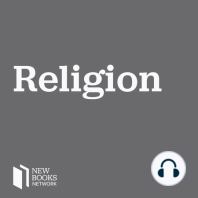56 min listen

Stuart Young, “Conceiving the Indian Buddhist Patriarchs in China” (U of Hawaii Press, 2014)
Stuart Young, “Conceiving the Indian Buddhist Patriarchs in China” (U of Hawaii Press, 2014)
ratings:
Length:
73 minutes
Released:
Apr 25, 2015
Format:
Podcast episode
Description
In Conceiving the Indian Buddhist Patriarchs in China (University of Hawai’i Press, 2015), Stuart Young examines Chinese hagiographic representations of three Indian Buddhist patriarchs–Asvaghosa (Maming), Nagarjuna (Longshu), and Aryadeva (Sheng tipo)–from the early fifth to late tenth centuries, and explores the role that these representations played in the development of Chinese Buddhism’s self-awareness of its own position within Buddhist history and its growing confidence that Buddhism could flourish in China despite the distance between the middle kingdom and the land of the Buddha. On the one hand, this project traces these three legendary figures as they are portrayed first as exemplars of how to revive the Dharma in a world without a Buddha, then as representatives of a lineage stretching back to Shakyamuni, and finally as scholar types who transmitted the Dharma to China via their exegetical and doctrinal works. More broadly, however, Young uses this transformation as an index of changing views of medieval China’s relationship to Shakyamuni’s India, and of Chinese Buddhists’ confidence in their own ability to realize the Buddhist soteriological path and firmly establish the Indian tradition on Chinese soil. One theme running throughout the book is the way in which these three patriarchs bridged the Sino-Indian divide.This was particularly important for those Chinese Buddhists who were unsettled by the geographical and historical distance that separated them from the India of Shakyamuni’s times. The Chinese found Asvaghosa, Nagarjuna, and Aryadeva particularly attractive because while their Indian origins lent them authority, they were, like the Chinese who peered down the well of history at them, living in a time without a Buddha and thus faced a dilemma not so dissimilar from the predicament in which medieval Chinese found themselves. Unlike the arhats, who experienced Shakyamuni’s ministry first-hand, and unlike the celestial bodhisattvas, who were not bound by history, these three Indian patriarchs occupied a temporal position between Shakyamuni’s India and medieval China. In addition, as Young shows, the Chinese attributed qualities to and highlighted aspects of these Indian patriarchs that were in accord with the values of Chinese literati, Buddhist and otherwise. In so doing, the Chinese rendered the Indian patriarchs familiar and made them into models that Chinese literati could realistically and willingly emulate.This point is related to another theme linking the chapters together: the Chinese Buddhist appropriation of Indian Buddhist and Chinese religious elements so as to claim them as their own. Young notes, however, that even as the patriarchs developed into models to be emulated, they were also transformed into objects of veneration. Besides being scholarly-types who sat around writing doctrinal treatises, Nagarjuna came to be associated with Pure Land thought and practice (and even had his own pure land, according to some,) and was worshipped for his apotropaic powers and ability to provide this-worldly benefits, while Asvaghosa became a silkworm deity and served as the protagonist in myths that provided a Buddhist justification for the killing of silkworms, to give but a few examples. And in a final chapter, Young shows how Buddhists co-opted Chinese conceptions of sanctity and sainthood so as to show that these qualities that were in reality of Chinese provenance were in fact Indian and Buddhist through-and-though. Readers will thus learn not only the details of Asvaghosa, Nagarjuna, and Aryadeva’s Chinese careers over a five-and-a-half-century period,Learn more about your ad choices. Visit megaphone.fm/adchoices
Released:
Apr 25, 2015
Format:
Podcast episode
Titles in the series (100)
J. D. Bowers, “Joseph Priestley and English Unitarianism in America” (Penn State University Press, 2007): Today we talk to J. D. Bowers of Northern Illinois University about his book Joseph Priestley and English Unitarianism in America (Pennsylvania State University Press, 2007). Against the received wisdom, Bowers argues that American Unitarianism did not... by New Books in Religion